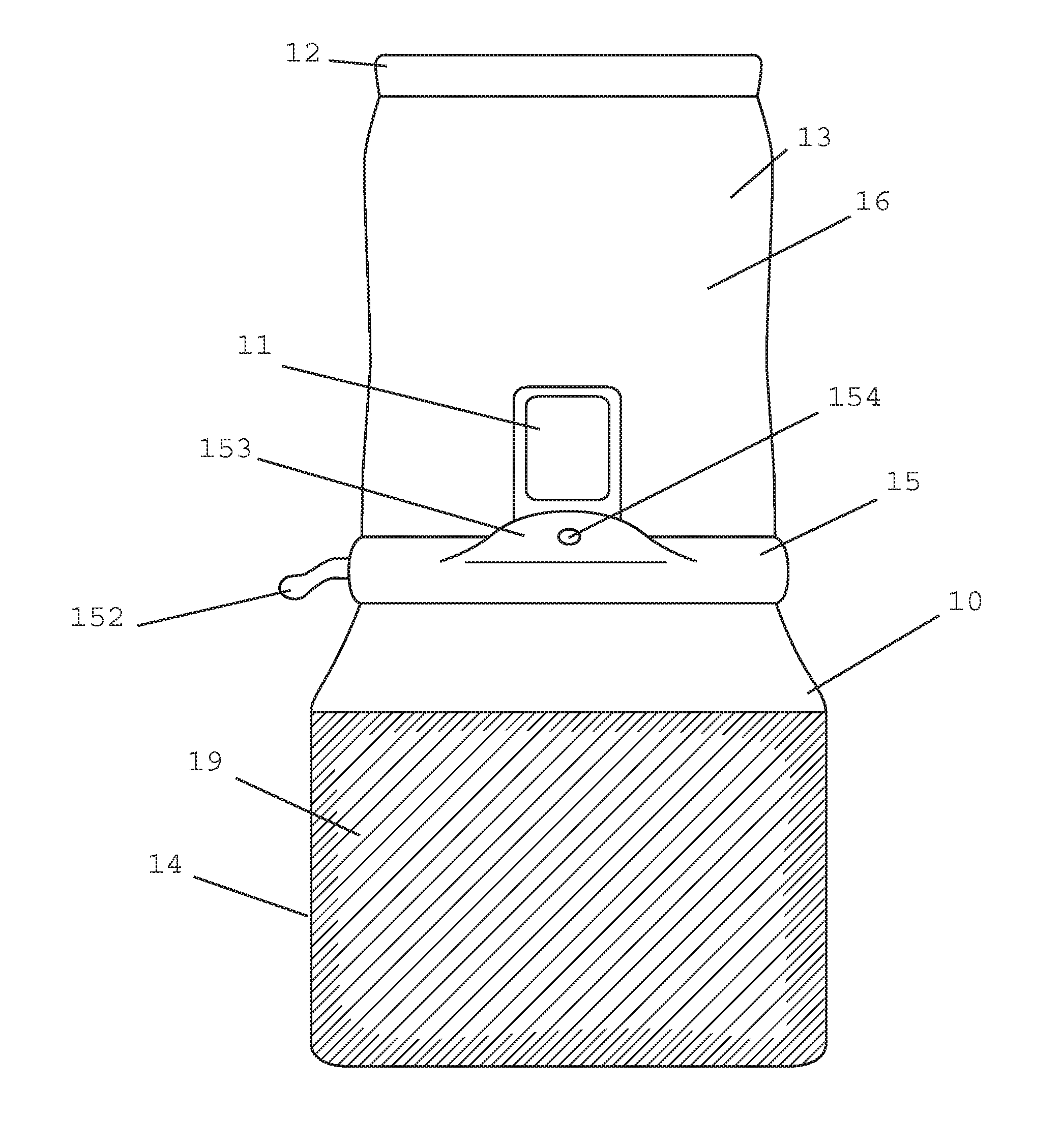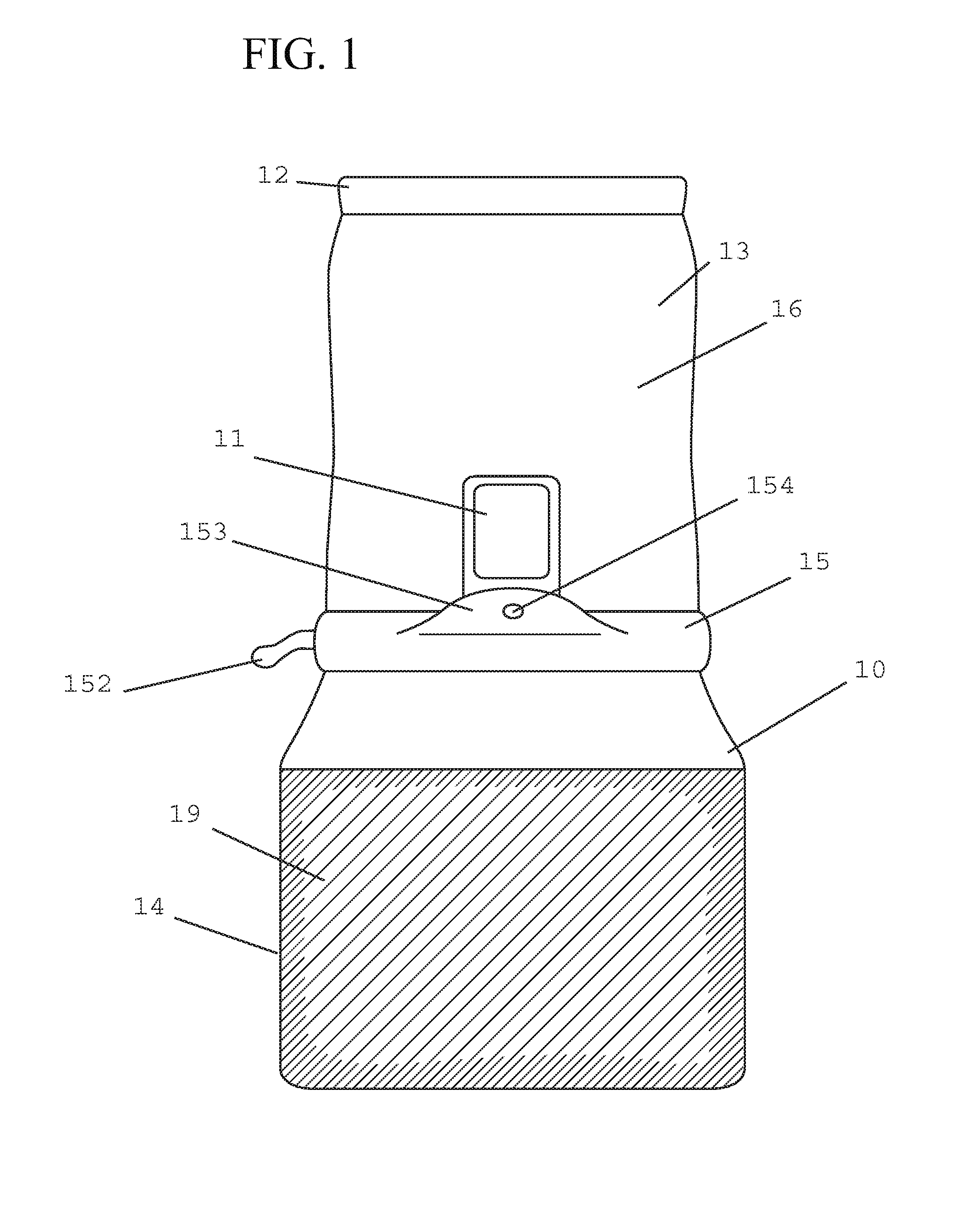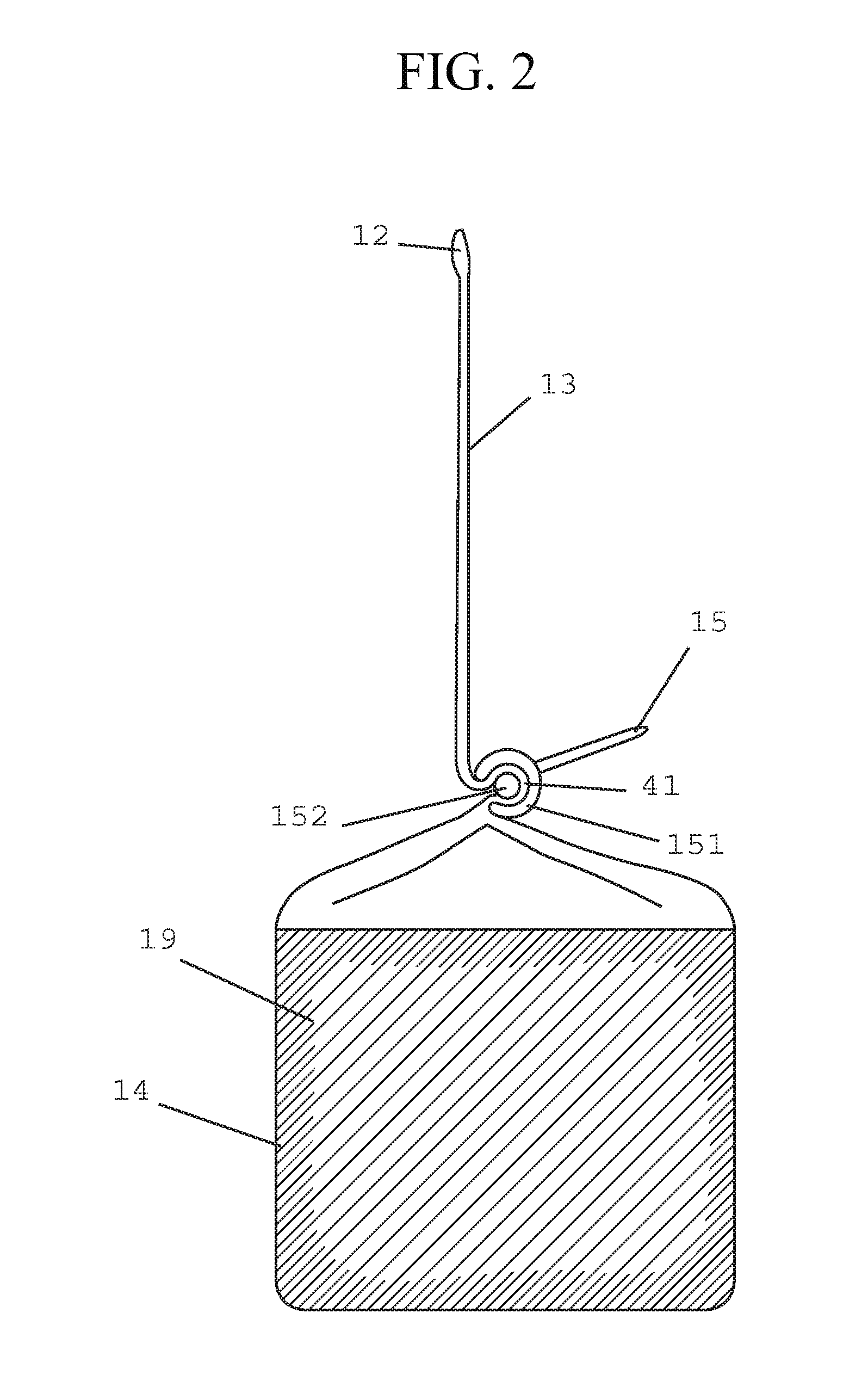Carbon Dioxide Supplementation Product with Delayed Activation Control
a technology of activation control and carbon dioxide, which is applied in the direction of horticulture, agriculture, horticulture methods, etc., can solve the problems of focusing carbon dioxide delivery to indoor growing environments, plants growing indoors under artificial light often lack enough cosub, etc., to prevent unsightly and foul smelling infestation, prolong shelf life of consumer goods, and reduce costs
- Summary
- Abstract
- Description
- Claims
- Application Information
AI Technical Summary
Benefits of technology
Problems solved by technology
Method used
Image
Examples
Embodiment Construction
[0074]The preferred embodiment as prepared in accordance with the steps of the present invention is illustrated in FIG. 1. In order to harness and selectively supply supplemental CO2 to an indoor growing environment, this consumer product uses a mycelium-inoculated bag, prepared as disclosed herein, to offer on-demand activation of CO2 supplementation. By utilizing an external sealing mechanism 15 to create a separation seam, the present invention cuts off the air supply provided by the micro-porous air-exchange portal (“breather patch”) 11 in the present invention's preferred container, a polypropylene bag 10. The removable sealing mechanism 15 effectively creates two chambers or zones in the bag. The chamber zones may be empty or filled and thus be viewed as being only one chamber, or two. The chamber zones in the preferred embodiment are the lower chamber 14—with the food substrate 18 and the mycelium spawn 17 mixed therein (sometimes referred to collectively as the mycelial mass...
PUM
 Login to View More
Login to View More Abstract
Description
Claims
Application Information
 Login to View More
Login to View More - R&D
- Intellectual Property
- Life Sciences
- Materials
- Tech Scout
- Unparalleled Data Quality
- Higher Quality Content
- 60% Fewer Hallucinations
Browse by: Latest US Patents, China's latest patents, Technical Efficacy Thesaurus, Application Domain, Technology Topic, Popular Technical Reports.
© 2025 PatSnap. All rights reserved.Legal|Privacy policy|Modern Slavery Act Transparency Statement|Sitemap|About US| Contact US: help@patsnap.com



